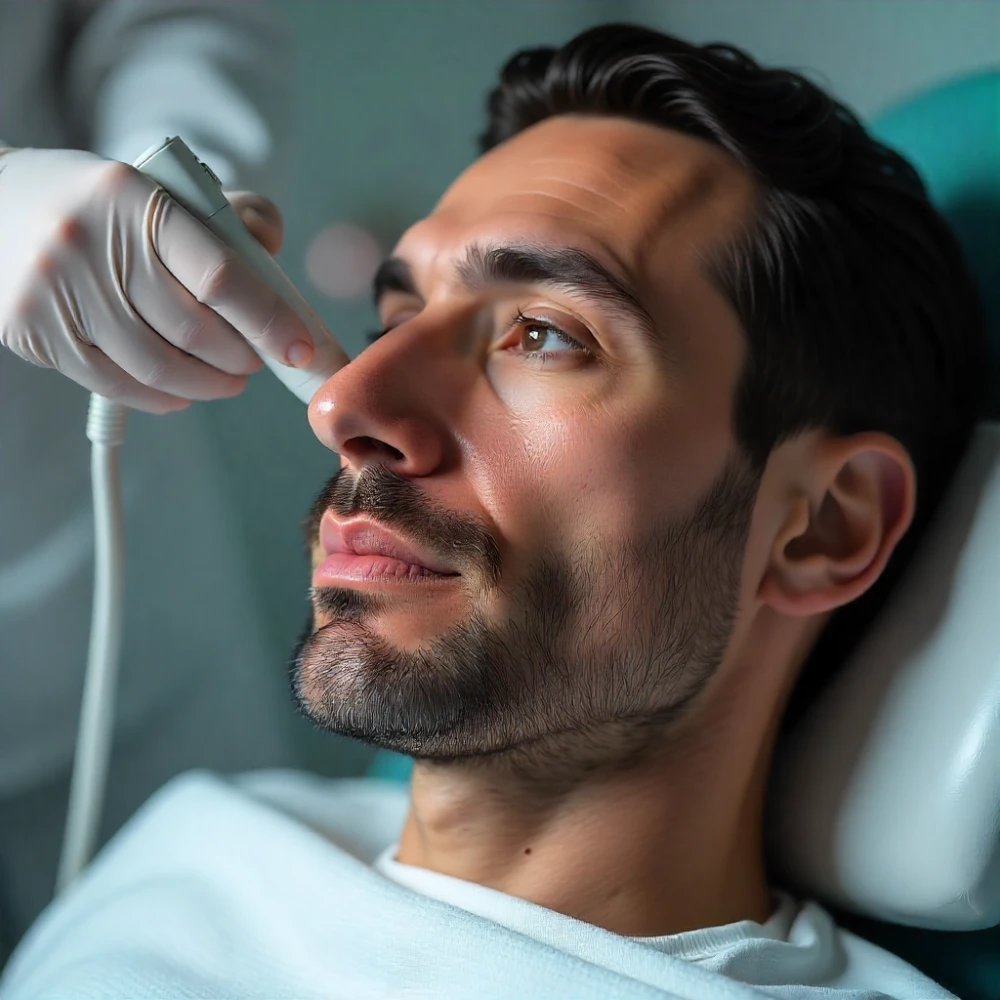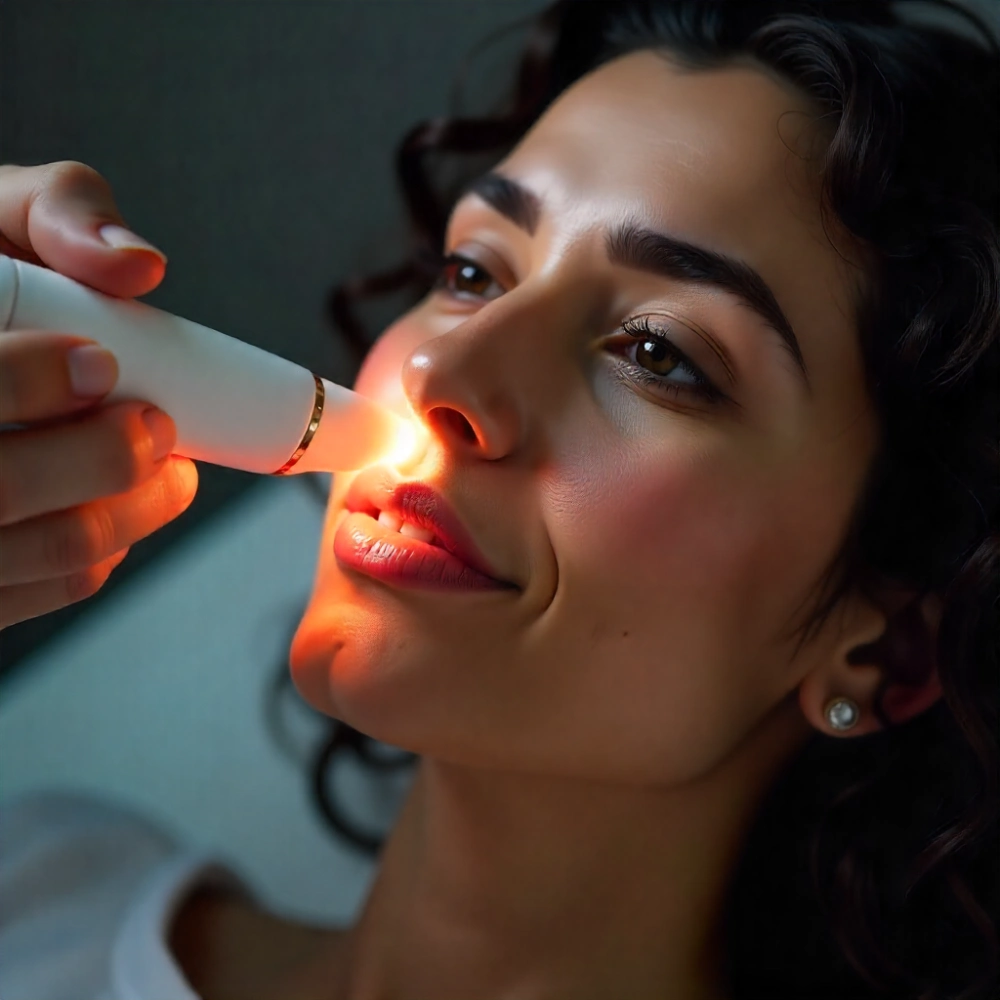If you’ve ever felt your cheeks burn with embarrassment in a social situation, you’re not alone. For millions of people worldwide, facial blushing isn’t just an occasional inconvenience—it’s a persistent medical condition that can significantly impact their quality of life, self-confidence, and social interactions. Whether you’re dealing with mild social blushing or severe erythrophobia (the fear of blushing), understanding your treatment options, including Facial Blushing Treatment, can be the first step towards reclaiming control over your life.
What is Facial Blushing and Why Does It Happen?
Facial blushing is a natural physiological response involving the dilation of blood vessels in the face, neck, and sometimes the upper chest. While occasional blushing is perfectly normal and experienced by everyone, chronic or severe facial blushing can become a debilitating condition that affects daily activities, professional interactions, and personal relationships.
The mechanism behind blushing involves your sympathetic nervous system, which controls involuntary bodily functions. When you feel embarrassed, anxious, or self-conscious, your brain triggers the release of adrenaline. This hormone causes the blood vessels in your face to dilate rapidly, allowing more blood to flow through them and creating that characteristic red flush.
For some individuals, this response becomes hyperactive, resulting in frequent, intense, and sometimes unpredictable episodes of blushing. This condition, medically known as pathological blushing or idiopathic craniofacial erythema, can occur with minimal triggers or even without any apparent cause.
The Emotional Impact of Chronic Blushing

Living with chronic facial blushing extends far beyond the physical symptoms. The psychological impact can be profound and far-reaching. Many individuals report feeling trapped in a cycle where the fear of blushing actually triggers more blushing episodes, creating a self-perpetuating pattern of anxiety and embarrassment.
Common emotional challenges include:
- Social anxiety and withdrawal: Many people with chronic blushing begin avoiding social situations, professional presentations, or romantic encounters to prevent potential embarrassment, and eventually can develop a severe anxiety disorder.
- Professional limitations: Career advancement may suffer when individuals avoid speaking up in meetings, giving presentations, or taking leadership roles.
- Relationship difficulties: The condition can impact romantic relationships and friendships, as individuals may feel self-conscious or avoid intimate conversations.
- Low self-esteem: Constant worry about blushing can erode confidence and self-worth over time.
- Depression: The social isolation and ongoing distress associated with chronic blushing can contribute to depressive symptoms.
Recognising that these feelings are valid and that effective treatments are available is crucial for anyone struggling with this condition. Effective treatments are available, and many people find ways to regain comfort and confidence in social situations. The first step is to get accurate, reliable information.
Non-Surgical Facial Blushing Treatment Options
Before considering surgical interventions, many healthcare providers recommend exploring non-invasive treatment approaches. These methods have helped many people manage their symptoms effectively and may be sufficient for mild to moderate cases.
Cognitive Behavioural Therapy (CBT)
Cognitive Behavioural Therapy has emerged as one of the most effective psychological treatments for facial blushing. This evidence-based approach helps you identify and modify the thought patterns and behaviours that contribute to your blushing episodes.
During CBT sessions, you’ll work with a trained therapist to:
- Recognise triggers and early warning signs of blushing episodes
- Challenge negative thought patterns about blushing and social situations
- Develop coping strategies for managing anxiety and self-consciousness
- Practice exposure techniques to gradually build confidence in social situations
- Learn relaxation and mindfulness techniques to manage physiological responses
Exploring various Facial Blushing Treatment options can lead to improved outcomes and better quality of life for those affected.
Research has shown that CBT can be particularly effective for individuals whose blushing is primarily driven by social anxiety or fear of judgment. Many people report significant improvements in their symptoms within 12 to 20 therapy sessions.
Meditation and Mindfulness Practices
Incorporating regular meditation and mindfulness practices into your daily routine can help regulate your nervous system and reduce the frequency and intensity of blushing episodes. These techniques work by:
- Training your mind to observe thoughts and sensations without immediate reaction
- Reducing overall stress and anxiety levels
- Improving emotional regulation and self-awareness
- Building resilience to social stressors and triggers
Popular mindfulness techniques for blushing management include deep breathing exercises, progressive muscle relaxation, body scan meditations, and loving-kindness meditation. Even dedicating 10-15 minutes daily to these practices can yield noticeable improvements over time.
Lifestyle Modifications
Simple changes to your daily habits and environment can sometimes significantly impact blushing frequency:
- Dietary Adjustments: Avoiding known triggers such as spicy foods, hot beverages, alcohol, and caffeine can reduce the likelihood of vasodilation episodes. Some individuals also benefit from identifying and eliminating specific food sensitivities.
- Temperature Management: Staying cool and avoiding overheated environments can help prevent thermal-induced blushing. Consider dressing in layers and keeping cooling accessories nearby.
- Stress Management: Regular exercise, adequate sleep, and stress-reduction activities can help regulate your overall sympathetic nervous system response.
- Social Skills Training: Building confidence in social situations through practice and skill development can reduce anxiety-related blushing triggers.
Topical Treatments and Skincare
While not addressing the underlying cause, certain topical treatments may help minimise the appearance of facial redness:
- Green-tinted primers and makeup: Color-correcting products can neutralise redness when blushing occurs.
- Gentle skincare routines: Using mild, fragrance-free products can prevent additional skin irritation that might worsen the appearance of blushing.
- Sun protection: Regular sunscreen use prevents additional redness from sun exposure and protects sensitive facial skin.
Medical Treatments for Facial Blushing
When non-invasive approaches aren’t sufficient, several medical treatments can provide relief from chronic facial blushing symptoms.
Beta-Blockers
Beta-blockers are medications originally developed for heart conditions that can effectively reduce blushing symptoms by blocking the effects of adrenaline on blood vessels. Commonly prescribed options include propranolol and atenolol.
These medications work by:
- Preventing rapid heart rate increases during anxiety
- Reducing the intensity of adrenaline’s vasodilation effects
- Providing a sense of physical calm during potentially triggering situations
Beta-blockers are often prescribed for situational use (such as before presentations or social events) or as daily medications for more severe cases. Most people tolerate them well, though potential side effects may include fatigue, dizziness, or changes in blood pressure.
Anti-Anxiety Medications
For individuals whose blushing is primarily anxiety-driven, anti-anxiety medications may provide significant relief. Options include:
- SSRIs (Selective Serotonin Reuptake Inhibitors): Medications like sertraline, paroxetine, or escitalopram can help reduce overall anxiety levels and social phobia symptoms.
- Benzodiazepines: Short-term use of medications like lorazepam or clonazepam may be helpful for specific situations, though long-term use is generally not recommended due to dependency risks.
- Buspirone: This non-benzodiazepine anti-anxiety medication can be effective for generalised anxiety that contributes to blushing.
Working closely with a psychiatrist or primary care physician is essential to find the right medication and dosage for your specific needs while monitoring for potential side effects.
Botox Injections
Botulinum toxin (Botox) injections can also be used to reduce blushing by temporarily blocking nerve signals. While more commonly known for cosmetic applications, Botox can effectively reduce blushing by temporarily blocking nerve signals that cause blood vessel dilation.
The treatment involves:
- Strategic injection of small amounts of Botox into specific facial areas
- Temporary interruption of nerve signals to blood vessels
- Reduction in blushing intensity and frequency for 3-6 months
- Minimal downtime and relatively few side effects
Results typically become apparent within 1-2 weeks of treatment, and many patients report significant improvements in their confidence and social comfort levels. Regular maintenance treatments are required to sustain benefits.
Laser Therapy

Various laser treatments can help reduce the appearance of facial redness and may provide some relief from blushing symptoms:
- IPL (Intense Pulsed Light): This treatment targets dilated blood vessels and can reduce baseline facial redness, making blushing episodes less noticeable.
- Pulsed Dye Laser: Specifically designed to treat vascular lesions, this laser can reduce visible blood vessels and overall facial redness.
- Nd:YAG Laser: Effective for treating deeper vascular issues that contribute to facial flushing.
Multiple treatment sessions are typically required, and results vary depending on individual skin characteristics and the severity of vascular involvement.
Surgical Treatment: Endoscopic Thoracic Sympathectomy (ETS)
For individuals with severe, treatment-resistant facial blushing that significantly impacts their quality of life, endoscopic thoracic sympathectomy (ETS) may be considered as a last resort option.
Understanding ETS Surgery
ETS is a minimally invasive surgical procedure that involves cutting or clamping specific sympathetic nerve pathways responsible for triggering blushing responses. The surgery is performed through small incisions in the chest, using an endoscope for precision.
During the procedure:
- The patient is placed under general anaesthesia
- Small incisions (typically 2-3) are made in the chest wall
- A tiny camera is inserted to visualise the sympathetic nerve chain
- Specific nerve segments (usually T2-T4) are cut, clamped, or destroyed
- The procedure typically takes 30 minutes per side
ETS Success Rates and Effectiveness
Research studies indicate that ETS surgery has high success rates for eliminating facial blushing, with most studies reporting success rates between 85-95% for facial flushing symptoms. Many patients experience immediate and dramatic relief from their blushing symptoms following recovery.
This procedure has been performed for decades, and many patients report significant improvement in their symptoms. For some patients, ETS brings substantial improvements in quality of life. Allowing them to pursue careers, relationships, and social activities they previously avoided.
Potential Risks and Complications
Like any surgical procedure, ETS carries certain risks that must be carefully considered:
- Compensatory Sweating: The most common side effect, occurring in 60-90% of patients, involves increased sweating in other body areas (typically the torso, back, or legs). While usually manageable, this can sometimes be more bothersome than the original blushing.
- Gustatory Sweating: Some patients experience facial sweating when eating certain foods, particularly spicy or sour items.
- Horner’s Syndrome: A rare complication involving drooping eyelid and constricted pupil, occurring in less than 1% of cases.
- Phantom Sweating: Some patients report feeling like they’re sweating in areas where they no longer can, typically resolving over time.
- General Surgical Risks: Including infection, bleeding, pneumothorax, or adverse reactions to anaesthesia.
- Potentially Excessive Dry Hands: for patients who don’t suffer from hyperhidrosis, the surgery can lead to dry hands needing to apply cream throughout the day.
Who is a Good Candidate for ETS?
ETS surgery is typically considered only for individuals who meet specific criteria:
- Severe, documented facial blushing that significantly impacts quality of life
- Failed response to comprehensive non-surgical treatments over at least 6-12 months
- Realistic expectations about potential outcomes and side effects
- Good overall health and ability to tolerate general anaesthesia
- Strong psychological stability and support system
- Thorough understanding of risks, benefits, and alternatives
A comprehensive evaluation by a thoracic surgeon experienced in ETS procedures is essential to determine candidacy and discuss all aspects of the surgery.
Preparing for ETS Surgery
If you and your surgical team determine that ETS is appropriate for your situation, thorough preparation is crucial:
- Medical Evaluation: Complete physical examination, chest imaging, and laboratory tests to ensure you’re healthy for surgery.
- Psychological Assessment: Some surgeons recommend a psychological evaluation to ensure realistic expectations and adequate coping strategies.
- Lifestyle Preparation: Stopping smoking, optimising nutrition, and arranging post-operative support and time off work.
- Education: Understanding the procedure, recovery process, and potential outcomes through discussions with your surgeon and possibly other patients who have undergone ETS.
Recovery and Aftercare Following ETS Surgery
Recovery from ETS surgery is typically straightforward, with most patients returning to normal activities within 1-2 weeks.
Immediate Post-Operative Period
The first few days following surgery involve:
- Hospital monitoring for 12-24 hours to ensure no complications
- Pain management with prescribed medications
- Chest tube monitoring (if required) and removal
- Gradual resumption of normal activities as tolerated
Long-Term Recovery Expectations
Most patients notice immediate elimination of facial blushing, though full appreciation of results may take several weeks as swelling subsides and psychological adjustment occurs. Follow-up appointments with your surgeon will monitor healing and address any concerns.
Managing Compensatory Sweating
If compensatory sweating occurs, various management strategies can help:
- Breathable, moisture-wicking clothing
- Antiperspirants designed for excessive sweating
- Lifestyle modifications to stay cool
- In severe cases, additional treatments like Botox injections for affected areas
Alternative and Emerging Treatments
The field of blushing treatment continues to evolve, with researchers exploring new approaches:

Radiofrequency Treatments
Non-invasive radiofrequency devices show promise for reducing facial redness by targeting blood vessels without surgical intervention.
Cryotherapy
Controlled cooling treatments may help reduce vascular reactivity and minimise blushing responses.
Nerve Block Procedures
Less invasive nerve blocking procedures are being studied as alternatives to surgical sympathectomy.
Pharmacological Innovations
New medications specifically targeting the pathways involved in pathological blushing are in development.
Choosing the Right Treatment Path
Selecting the most appropriate treatment approach requires careful consideration of multiple factors:
Severity Assessment
Work with healthcare providers to accurately assess the severity of your condition and its impact on your life. Mild to moderate cases often respond well to non-invasive approaches, while severe cases may require more aggressive interventions.
Risk-Benefit Analysis
Each treatment option carries different risk profiles and success rates. Consider your personal tolerance for risk, lifestyle factors, and treatment goals when making decisions.
Sequential Approach
Most experts recommend starting with less invasive treatments and progressing to more aggressive options only if necessary. This approach allows you to find the minimum intervention needed for adequate symptom control.
Professional Guidance
Working with experienced healthcare providers who understand facial blushing is crucial. Consider seeking care from:
- Dermatologists specialising in vascular conditions
- Psychiatrists or psychologists experienced in social anxiety disorders
- Thoracic surgeons with extensive ETS experience (if surgical options are considered)
Living Successfully with Facial Blushing Treatment
Regardless of which treatment path you choose, developing a comprehensive approach to managing facial blushing involves more than just addressing the physical symptoms.
Building Confidence
Treatment should be part of a broader strategy to build social confidence and self-esteem. This might include:
- Social skills training
- Public speaking practice
- Gradual exposure to previously avoided situations
- Building supportive relationships with understanding friends and family
Setting Realistic Expectations
While treatments can be highly effective, it’s important to maintain realistic expectations. Complete elimination of all blushing may not be possible or even desirable, as some degree of emotional responsiveness is normal and healthy.
Long-Term Success Strategies
Maintaining treatment benefits often requires ongoing attention to:
- Stress management and self-care
- Regular follow-up with healthcare providers
- Continued practice of learned coping strategies
- Openness to adjusting treatment approaches as needed
The Importance of Support and Understanding

Living with chronic facial blushing can feel isolating, but you’re not alone in this experience. Connecting with others who understand your challenges can provide valuable emotional support and practical advice.
Consider exploring:
- Online support communities for individuals with social anxiety or blushing
- Local support groups for anxiety disorders
- Working with therapists who specialise in social anxiety and related conditions
Remember that seeking treatment for facial blushing is a sign of strength, not weakness. You deserve to feel comfortable and confident in social situations, and effective treatments are available to help you achieve this goal.
Conclusion: Your Path Forward
Facial blushing doesn’t have to control your life. From simple lifestyle modifications and therapy to medical treatments and surgical options, there are numerous effective approaches to managing this condition. The key is finding the right combination of treatments that works for your specific situation and lifestyle.
Begin by consulting with healthcare providers who specialise in facial blushing and can help you develop a comprehensive treatment plan. Whether your path involves therapy, medication, minimally invasive procedures, or surgical intervention, taking that first step towards treatment is often the most important decision you can make.
Remember that overcoming chronic facial blushing is often a gradual process, and patience with yourself during this journey is essential. With the right approach, many people are able to feel more at ease in social situations and less limited by blushing.Your journey towards freedom from problematic facial blushing starts today. Take that first step, reach out for professional help, and begin exploring the treatment options that could transform your social experiences and overall quality of life. You deserve to feel comfortable in your own skin, and with the right approach, that comfort and confidence are absolutely achievable.
FAQs
How do you get rid of facial blushing?
Facial blushing is a typical response to embarrassment, stress, or heightened emotions. While you may not be able to eliminate it, here are a few tips to help minimise facial blushing:
- Deep breathing and relaxation exercises: Practice deep breathing techniques to help calm your body and reduce anxiety, which can trigger facial blushing.
- Identify triggers: Pay attention to situations, thoughts, or emotions that typically cause blushing for you. Identifying your triggers can help you better manage and cope with them.
- Cognitive behavioural therapy (CBT): Consider seeking a cognitive behavioural therapist to help you understand and challenge negative thought patterns contributing to blushing.
- Medication: In severe cases, your doctor may prescribe medications, such as beta-blockers, to help reduce the physical symptoms associated with blushing.
- Topical treatments: Some individuals find relief from facial blushing using topical treatments, such as creams or gels that contain ingredients like alpha agonists or beta blockers.
- Make lifestyle adjustments: Avoid triggers like spicy foods, alcohol, caffeine, and extreme temperature changes. Regular exercise, getting enough sleep, and practising good self-care can help manage blushing episodes.
- Camouflage techniques: Consider makeup techniques or using green-tinted colour-correcting creams to help neutralise redness and reduce the appearance of blushing.
Remember, it’s essential to consult with a healthcare professional for a proper diagnosis and personalised advice based on your specific situation.
Is there a surgical treatment for facial blushing?
One possible surgical facial blushing treatment is Endoscopic Thoracic Sympathectomy (ETS). This procedure involves cutting, clamping, or removing specific nerves that trigger facial blushing. ETS is typically performed under general anaesthesia and has successfully reduced facial blushing.
However, it’s essential to thoroughly discuss your concerns and options with a qualified medical professional, such as a dermatologist or a surgeon who specialises in treating facial blushing. They will be able to provide you with a comprehensive evaluation and suggest the best course of action based on your specific situation.
Remember, it’s always important to weigh the potential risks and benefits of any medical procedure and to make an informed decision with the guidance of a healthcare professional.
What are the complications of surgery for facial blushing?
Complications of surgery for facial blushing, also known as facial blushing surgery, may include:
- Infection: Any surgical procedure, including facial blushing surgery, risks infection. If an infection occurs, it may require treatment with antibiotics.
- Scarring: Depending on the technique used for facial blushing surgery, visible scarring may occur. This can vary from minimal scarring to more noticeable scars.
- Numbness or tingling: Some individuals may experience temporary or permanent numbness or tingling in the treated area. This is due to nerve damage during the surgery.
- Bleeding: Facial blushing surgery can involve bleeding like any surgical procedure. Excessive bleeding may require additional intervention or treatment.
- Persistent or recurring flushing: In some cases, the surgery may not completely eliminate facial blushing, and individuals may experience persistent or recurring flushing episodes.
- Sweating abnormalities: Facial blushing surgery can affect the body’s natural regulation of sweating, leading to abnormal sweating patterns. This can include excessive sweating in some areas or reduced sweating in others.
- Cosmetic dissatisfaction: Surgery outcomes vary from person to person, and there is a risk that individuals may be dissatisfied with the results of the surgery. It’s important to have realistic expectations and discuss them with a qualified surgeon beforehand.
- Rare complications: While uncommon, other rare complications can be associated with facial blushing surgery. These can include nerve damage, facial asymmetry, or allergic reactions to anaesthesia or surgical materials.
Discussing the potential complications with your surgeon before facial blushing surgery is essential. They can provide more detailed information based on your case and medical history.